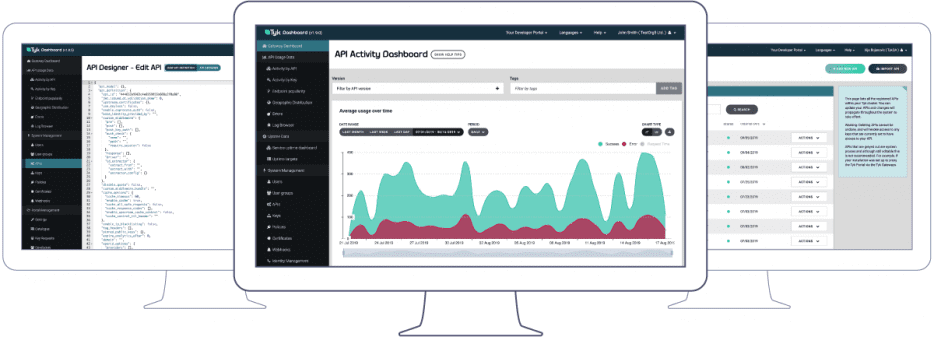Unlocking API potential needs a technical language, with a business accent: Tyk
Enterprise business technology today is an API-based ecosystem. Companies may have tried and failed in the past to migrate every service and his dog onto monolithic platform X or Y, but as technology like cloud, SaaS, and microservices have bedded in and proved their worth and agility, secure but low-overhead data exchange is the key to effective computing.
The mechanisms by which data and services are exposed, internally or externally, therefore need just as much care and attention as the apps or solutions themselves. In the same way that a misfiring network switch can return an entire network segment to the stone age, poor API management can make or break a business.
The stakes are further raised as organisations build products and services across multiple clouds and geographically separate regions — hybrid topologies are common, so any platform to oversee APIs has to be fully cognisant of that reality.
The cloud native API Gateway and Management Platform from Tyk*, will let your enterprise manage and secure all API transactions in ways that are centered around the organization’s strategies and business plan. Importantly, the platform uses the type of technologies that DevOps professionals will recognize and take to like ducks to water. We feel that’s an intriguing positioning around what is, after all, quite a complex technology under the hood.
From centralized point(s) of control, access to all APIs can be controlled according to internal schema — groups and subsets along business function or infrastructure lines — from the level of a single point of internet presence down to a single, transient container.
Control is granular (rate limiting, request throttling, automated quota refresh granting, and so on), or at scale in large groups. And like all good software abstractions, the actual code instances and their APIs can be distributed anywhere, in any topology from on-premise to multiple data centers and clouds without any infrastructure-based worries in the equation. From a cloud-native platform, organizations can manage all aspects of even the most complex API services from a single place.
Companies with significant investment in multiple cloud platforms like Azure, Google Cloud, Alibaba Cloud, AWS and so on, can use Tyk’s capabilities to have a single point of control and oversight of all APIs — be they cloud-based or installed on-premise.

Source: Tyk API Management Dashboard
Access control is applied similarly, so all API traffic is as secure and safe for the enterprise and its customers as it is configurable. Security policies control levels of exposure, and there’s full management of authentication methods like JSON tokens, keys, HMAC, and Social OAuth of various flavors.
APIs and endpoints can be built and tested, with simulated load testing and compatibility issues ironed out before any deployment. That approach fits well into a continuous development workflow, and right across the board, the Tyk platform should slot right in with your existing DevOps processes.
The platform is massively extensible, uses open standards, and can be extended by use of plugins (Datadog, Prometheus and literally hundreds of others) to other specialized systems you may already have deployed and invested in. Thankfully, the days of the “tear-down-and-build-again” approach to new technology platforms are well behind us.
The Gateway element of the Tyk offering remains a free and open source solution and there is an optional licensing model for organizations wishing to take advantage of the platform’s point-and-click management platform, SLA-governed support, or for enterprise-level, multi-region deployments.
FOSS-based or paying, support comes from engineers who have significant business and technical experience, there at the end of the line to answer questions. The team has the expertise to address even the big questions quickly, whether that’s a technical question about running APIs across different cloud providers, or an issue about data governance. There’s a large user community too, and online documentation; that’s all available, clearly, regardless of whether you’re signed up as a paying Tyk customer.
From browsing the extensive online documentation right up to users that need a 24/7/365 SLA for mission-critical settings, you get access to what Tyk states is the best support in the business.
Tyk users can choose to host the API Gateway on-premise, on private or public cloud, or use Tyk’s SaaS model. The platform can run with just a small Redis server as a back end and has been known to run on a Digital Ocean $5 Droplet — although that’s possibly not a wise choice for a production setting! The company’s customers include many household names: AXA, Cisco, Starbucks, and the Financial Times, so you’ll be in the best of company, whatever your scale of deployment, or the depth of your pockets.
The full lifecycle of APIs can be handled, from test to roll-out, to managed sunsetting, so the essential service APIs provide is given the levels of attention that your development professionals should be bringing to their core code. This is API management for customer-focused business users keen to provide top-flight services, using technologies IT and Dev teams are happy to be around.
You can jump right in and install the platform now, or let the Tyk team inspire you through their series of webinars, tutorials, and talks on using API Management to drive innovation in your company.
To talk tech, or talk business, speak to an engineer who speaks your language.









